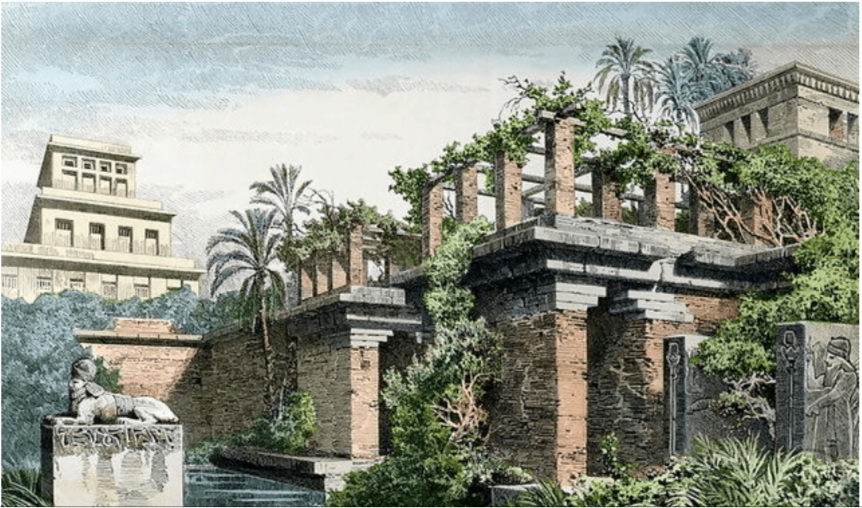Garden History and Design
Robin Schachat
The Origins of Garden Design in the Western World
Historically, garden designs in East Asia developed distinctly differently than those of the Mediterranean basin and, subsequently, Europe and the European-inflected Americas. So I will begin this year’s Garden History and Design articles with a look at the traditions of garden design that we typically associate with the “Western World,” from which the majority of our greatest American gardens derive their style.
Gardens as food sources, of course, arose long before people began to make note of their designs and history, and design itself was limited at first to practicality – keeping the critters out and achieving maximum production of food. The goal was to separate humans, their food animals, and their food plantings, from the incursions of “the wild beyond.” Lots of walls around practical spaces, usually including wells or other water sources.
But decorative gardens stretch back millenia. What do you think of when you imagine the earliest garden you can think of? Eden? Not human-designed, try again. The Hanging Gardens of Babylon? That’s an excellent thought! They were built around 600 BC by Nebuchadnezzar’s people, but they are actually quite late compared to the first pleasure gardens designed in the Mediterranean basin.
Early Egypt. AHA! We see in hieroglyphic history depictions and discussion of pleasure gardens for the wealthy. These are predominantly outdoor spaces landscaped with solid-surfaced, defined and generally geomatric spaces, augmented by attractive plantings – what we might subsequently think of as piazzas, loggias, atria, courtyards, not so much gardens defined by the plants – but this is a start. Exterior pleasure places, including plants, for human enjoyment, where intentional design elements such as geometry, color relationships, rhythm, and repetition come into play. These design elements may in fact have arisen elsewhere in the Mediterranean basin before they emerged in Egypt, but this is where we first see depictions of their use. And this is where we first see water used as a decorative element, with rills and pools.
Western civilization flourished in what we now consider the Middle East during the two millenia prior to the Modern Era (“A.D.”). The grand cities in the fertile valleys of the Tigris and Euphrates Rivers in modern day Iraq show evidence of the development of pleasure gardens, the most famous being the Hanging Gardens of Babylon. Homes of the wealthy were built around pleasure gardens which were called “Paradis, the Arabic word for garden.
The rugs that carpeted homes in winter and also nomadic tents were designed to resemble these home garden spaces, with walls and depictions of flowers and trees: lilies, iris, boteh (the basis for modern paisley forms, fashioned after a leaf, despite what Wikipedia tells you about pomegranates), cypress, tulips and other stylized plant forms continue to populate the Persian (Iranian) carpet designs we know and love today. Often these designs are centered on water features such as stylized fountains. They are always surrounded by layers of stylized walls – the many borders we see in such carpets. The intent in weaving them was to create a pleasure garden or paradise in which people might enjoy themselves, even in enclosed spaces.
And this brief introduction leads us to the Moors, and the proliferation of such styles across the civilizations of North Africa and onward to the greatest early medieval gardens they created in Spain. Next Time!
.

